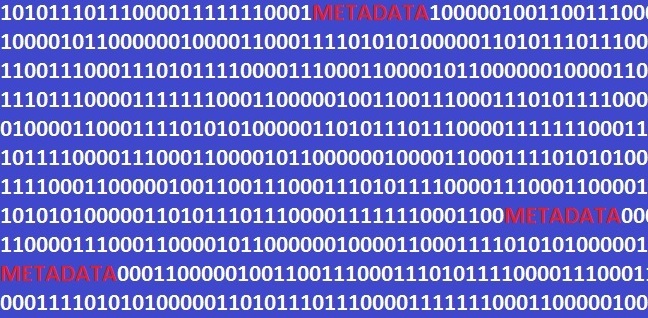The volume of data the world is generating is growing at an ever rapid pace. 90% of all the data in the world has been generated over the last two years. We are more mobile and sharing more data than ever before. Communication is based on the transmission of data, but we are not always aware of the data that exists behind the data we send.
What is Metadata?
Metadata is data that describes data. It helps bring context to content. The term refers to any structured data used to aid the identification, description and location of networked electronic resources. It is generated automatically when using technology whenever data is created, acquired, added to, deleted from, or updated.
There are three main types of metadata:
- Descriptive metadata describes the subject matter of the content for purposes such as discovery and identification. It can include elements such as title, author, and keywords.
- Structural metadata indicates how compound objects are put together, for example, how pages are ordered to form chapters or the formatting used.
- Administrative metadata provides information to help manage a resource, such as when and how it was created, file type and other technical information, its status and who can access it.

Why is it important?
Metadata can be extremely useful. It helps with storage, search and access control through attached tags and structure. It also brings associated risks if not carefully managed. Private, sensitive and potentially embarrassing information could be disclosed unwittingly. For example if the editing time of a document is attached to a file that is sent to a client as part of some consultancy work, it might create an issue if there is a significant mismatch with time billed. Using the same scenario, embarrassment or offence could be caused if document level content or tracked changes were to reveal comments that were not intended to be seen by the client.
How can you reduce the risks?
It is important when sharing information to be aware of what hidden metadata may be included. Education to the hidden dangers plays an important part. A how, what and who test can be carried out to help mitigate the risks.
- How – is information being shared? e.g. via email, cloud, internet
- What – is being shared? Is there any sensitive or embarrassing information being disclosed?
- Who – might the information be visible to? e.g. a trusted recipient or an unidentified browser
Metadata matters. Beware.
Sources:
National Information Standards Organization